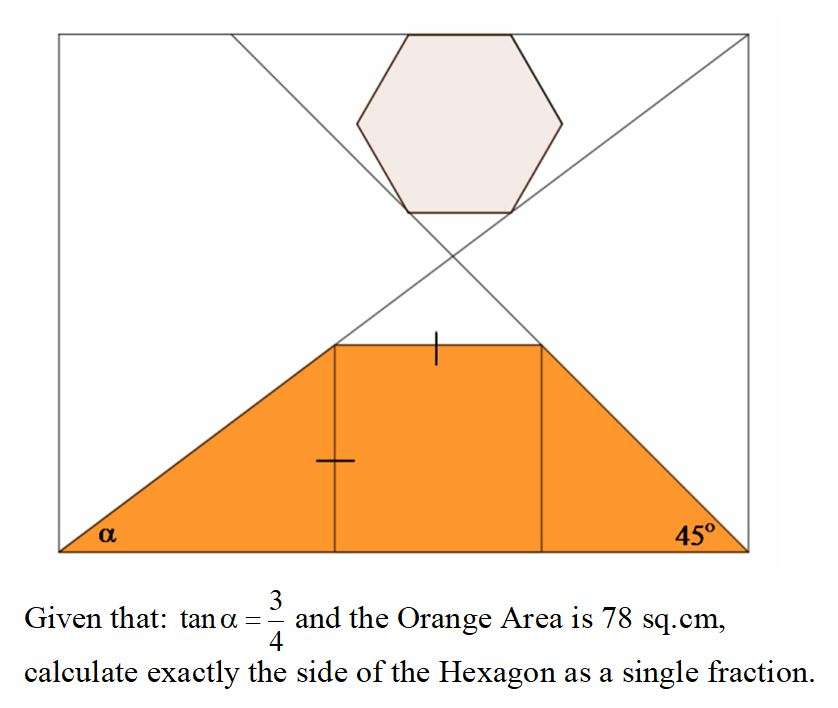Mathematics Question and Solution
Sir Mike Ambrose is the author of the question.
Let the side of the inscribed square be a.
Calculating a.
¾ = a/b
b = ⅓(4a)
It implies;
½*a*((⅓(4a))+3a) = 78
⅙(13a²) = 78
⅙(a²) = 6
a = 6 cm.
b = ⅓(4*6)+6+6
b = 20 cm.
¾ = c/20
c = 15 cm.
Let the side of the regular hexagon be d.
Calculating d.
e² = 2d²-2d²cos120
e = √(3)d cm.
(¾) = √(3)d/f
f = ⅓(4√(3)d) cm.
It implies;
d+e+f = 15
d+√(3)d+⅓(4√(3)d) = 15
3d+3√(3)d+4√(3)d = 45
d = 45/(3+7√(3)) cm
It implies;
The side of the regular hexagon exactly as a single fraction is;
45/(3+7√(3)) cm.
= 5(21√(3)-9)/46 cm.
